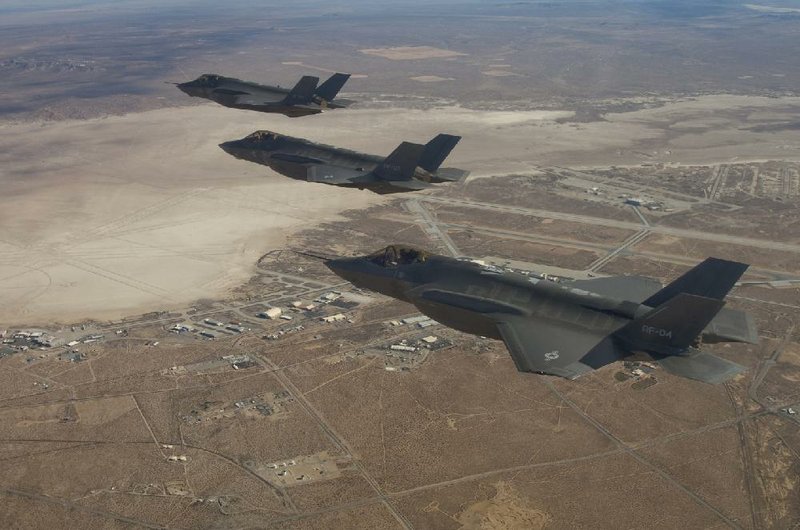The Pentagon will need as much as $500 million extra to finish the development phase for Lockheed Martin Corp.'s F-35, the most expensive U.S. weapons system ever, defense officials said.
The F-35 program office made the request for more money to complete development, which is supposed to be in its last stretch after 15 years, during a private review last month by the Defense Acquisition Board, according to the officials, who asked not to be identified discussing internal budget discussions.
The Defense Department and the military services that are counting on the three versions of the F-35 are assessing how to pay for a request that would go into the department's fiscal 2018 budget proposal. Approving the added funds would probably be the first F-35 decision to reach the desk of the next defense secretary.
The call for more money comes as the Pentagon's chief weapons tester has issued a fresh warning that the aircraft, projected to cost $379 billion for a fleet of 2,443 U.S. planes, is far from showing it has full combat capability.
In an eight-page memo dated Oct. 14, Michael Gilmore, the director of operational testing, recommended "very strongly that the program be restructured now and provided the additional resources it clearly requires to deliver its long-planned and sorely needed full" capability.
While the added $500 million would be a fraction of what's already a $55 billion development phase, Frank Kendall, the undersecretary of defense for acquisition, said in an email that he was "disappointed to hear that additional funds would be needed" and "we are working to minimize the size of the shortfall and to deliver options to address it."
Pentagon Comptroller Mike McCord said he "wasn't totally shocked" by the funding request. While it's not a big increase considering the size of the program, McCord said in an interview, "I was hopeful, maybe, that we wouldn't have a problem like this because" the program "has been moving in a fairly decent direction."
The F-35 is being developed even as the plane is in low-rate production, an overlap that Kendall once called "acquisition malpractice." The request for more funding is at odds with past assurances that the program would absorb any cost increases in development.
"In the development program we like to tell people that we have no more money and we have no more time," Air Force Lt. Gen. Christopher Bogdan, director of the Pentagon's F-35 program office, said at a conference in 2014.
The program had "the resources to complete" on time and "on budget, and we intend on doing that," he said then. "We don't plan on going back and asking for any more money or any more time to get this program done."
The development phase was originally scheduled to end in fiscal 2012. That was extended to fiscal 2016 during a major program reorganization in early 2010, and $476 million in funding was added then.
Program spokesman Joe DellaVedova didn't respond to questions about when the development phase is now scheduled to end and why the additional money is required. Kendall said in April testimony to Congress that "steady progress continues" toward completing development "in the fall of 2017."
Gilmore, the testing director, said in an email that he estimates flight testing required to complete the development phase won't be finished until November 2018, at least a year later than planned, "unless the program is allowed to skip/delete planned" evaluations.
In Gilmore's memo, he cited problems including a 10-month delay to December in the release for flight testing of the latest version of the F-35's most capable software; insufficient progress in flight testing of combat mission systems; questions about design deficiencies with the plane's gun; too few aircraft available for flights; and as many as 1,179 "significant open" software deficiency reports.
Gilmore said the program has made only "limited progress" since he wrote Pentagon leaders Aug. 9 expressing concerns a week after the Air Force declared its version of the F-35 operational.
Air Force Secretary Deborah James certified to Congress in September that aircraft scheduled to be delivered starting in early 2018 will be fully combat-capable, but Gilmore said in a separate email Tuesday that he considered that unlikely.
In his memo, Gilmore wrote that the F-35 can't be ready for the combat testing it needs to pass before the aircraft can be deemed ready for full-rate production "if it is unwisely constrained to operate within its currently planned budget and schedule."
The program needs more funding, Gilmore said, to "complete all the testing" needed "to rectify a substantial number of existing critical deficiencies as well as the new deficiencies that will inevitably be discovered."
A Section on 11/03/2016
